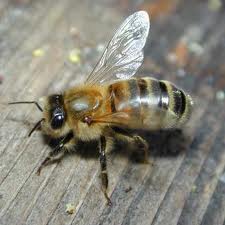The Buzz
 BBC News Channel, Wednesday, 27 February 2008, by Rebecca Morelle
BBC News Channel, Wednesday, 27 February 2008, by Rebecca Morelle
In a laboratory in the heart of the east end of London, an unmistakeable buzz fills the air. The small room is packed with bumblebees – hundreds upon hundreds of them going about their business in small wooden hives. Despite their scientific setting, the insects look just the same as bumblebees found in the wild, apart from one small – really small – difference.
Most are adorned with minuscule silver tags, so tiny that at first they are hard to see. But every so often, as they catch the laboratory lights, they glint and sparkle, standing out from the bees’ fuzzy bodies. These tiny accessories are Radio Frequency Identification (RFID) tags – the same technology used to track stock in warehouses or supermarkets or employed for transport systems such as the Oyster Card payment scheme used on the London Underground.
They have been fitted to the bees by scientists at Queen Mary, University of London (QMUL), who want to keep track of the animals’ whereabouts so as to better understand these brainy bugs.
Biologist Nigel Raine said: “Bumblebees have a relatively small brain – they have about 950,000 brain cells, humans have 100 billion – but they can achieve rather impressive feats of learning and memory given what they have got.”
Recent research has revealed that bees are able to recognise individual human faces, which, according to Dr Raine, is not that surprising given the daily challenges they face whilst foraging.
He explained: “When you think about your average park or meadow there might be dozens of species of flowers which are all different in terms of colour and shape and scent, and they are all differing in the rewards they are providing. Ultimately, the bees’ job is to go and find the best rewards from these flowers and they have to be flexible and learn and remember information, all the while making and breaking associations. This is all really quite complicated.”
Their navigational skills are impressive, too.
“These tiny animals leave their nests, fly back and forth between flowers, then they are somehow able to add all of these vectors together and fly back to their nest in a straight line,” said Dr Raine.
“These tags allow us to collect data from the bees without disturbing them and they help us to monitor a lot of bees simultaneously. Before we had them, we would have to stop the bee, record which bee it was, weigh it, then put it back to continue its business.”
Leave a comment